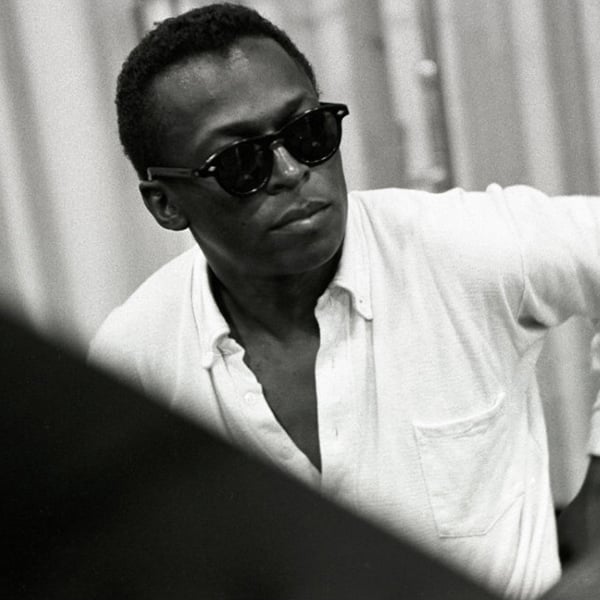
On the heels of the out of the box success of Bitches Brew, it was no surprise Columbia Records would look to a live album as Miles’ next release—and not just any live recording but one that caught him playing his new music for a new audience. Evidence shows the label had been preparing for it. It was Clive Davis, CBS/Columbia Records president who, in late 1969, contacted Bill Graham—the rock impresario who helped ignite the rock-hall revolution at San Francisco’s Fillmore Auditorium in 1966— to consider booking Miles. The trumpeter was “breaking out of his jazz bag,” Davis wrote, adding: “The ‘underground’,” using the term for the rock scene of the day, “is ready for Miles.”
But was Miles ready for the underground? The answer was unequivocally positive as revealed on At Fillmore, the two-disc package (the live double album fast becoming the standard for all popular acts at the time) chronicling Miles’ four night-run in early summer 1970 at the Fillmore East, New York City’s leading rock venue. Miles performed his music of the moment—much of it from In A Silent Way or Bitches Brew, plus few new pieces (Joe Zawinul’s “Directions,” Miles’ “Willie Nelson”) and an old friend (“I Fall In Love Too Easily”), in the company of a youthful, dress-down group befitting the venue—Chick Corea and Keith Jarrett on electric keyboards, Dave Holland switching between standup and electric bass, Jack DeJohnette on drums, Airto Moreira on percussion, and newcomer Steve Grossman on saxophones and flute.
Each of the album’s four meticulously edited tracks stretched for a full album side, and were titled for the day they were recorded: “Wednesday Miles,” “Thursday Miles,” and so on. The reason for this mode of presentation was both to allow more material to be included in the LP format (each complete track on later reissues is at least ten minutes long); more significantly, Miles was in the habit of kicking off tunes before the previous one had ended, overlapping in into another, making it difficult to pull out discreet performances.
In fact, Miles had been playing this way for a number of years. In 1967, in the high-energy cauldron of his Second Great Quintet, Miles had begun to skip over song endings, signalling the transition to the next number with no more than a few notes. The priority was the spontaneous flow of invention and surprise; audiences were unsure when or even whether to clap when a recognizable melody suddenly cycled by. By 1970, with the added volume of rock-fueled rhythms and electric instrumentation, Miles’ seamless sets took the pressure-cooker ideas to an extreme. (A year later, as a headliner at the Isle of Wight Festival, his 38-minute set was a single uninterrupted original he later titled “Call It Anything”).
In 1970, Miles was the sound of the time and At Fillmore is the snapshot of that brief moment. Just ask Carlos Santana.
The sound of Miles at the Fillmore was the sound of the Black Panthers. It was the sound of Vietnam. It was the sound of the protesting and the beatings and the shootings…the ‘60s were over and they also weren’t, you know? If ever there was a time when a rock audience was willing to open their ears and hear some great modern jazz like the kind Miles was creating, it was at the Fillmore from the late ‘60s into 1970, ’71. It didn’t last that long.























